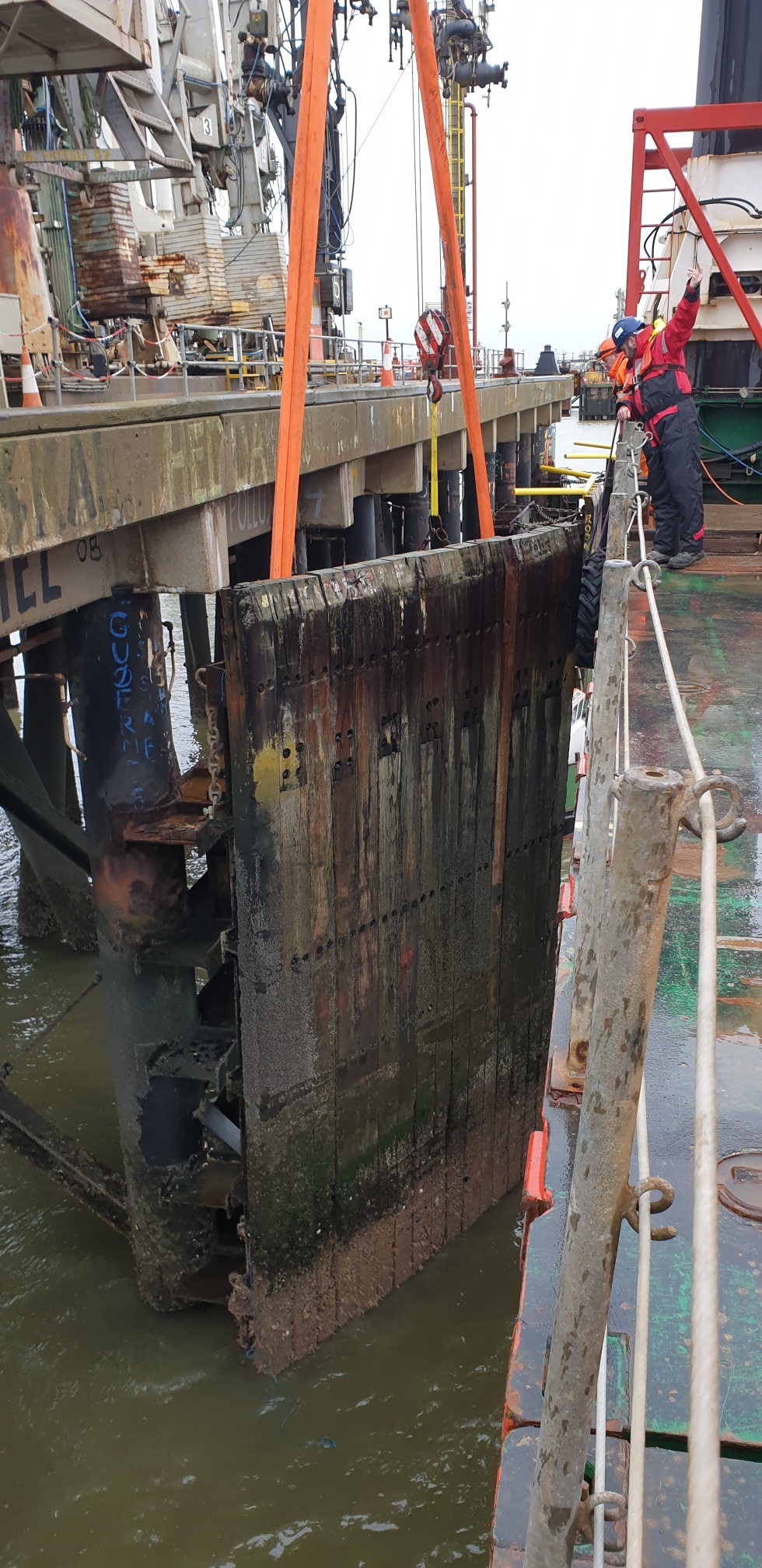Project details
Located on the Thames Estuary, the facility, which consists of 3no. deep water berths, is a modern import terminal used to supply the growing fuel demand in the South East of England. Following a detailed survey of Jetty 5 by our client, a decision was taken to upgrade existing berthing facilities. Southbay were awarded a contract to refurbish 4no. existing fenders, and to replace 3no. mooring bollards. In order to minimise disruption to ongoing operations, the project was delivered across a complete shutdown of the jetty, using specialist marine plant

The works were undertaken from a jack up barge, which was supported by a multicat and flat barge, which were predominantly used to transport materials. In refurbishing the 4no. fenders, the same methodology was adopted for each. Initial works included removing the fender panel and fixing chains. The fender panel, which consisted of 16no. timber rubbing strips was then transported to the works compound for refurbishment. Any damaged or missing timbers were replaced, complete with fixings. The fender panel was then turned over to provide access to the adjacent steelwork. The steelwork was then cleaned, prior to repairs in the form of welding new steel plates. The fender panel was then reassembled complete with fender cone. The refurbished panel was then transported back to the jetty where it was lifted directly from the flat barge, and secured in position. This included reattaching tension and sag chains. When reinstalling the fender panel, divers were used to bolt the lower section of panel to the jetty. Further works included the installation of 3no. 30t mooring bollards, each installed on a 225mm concrete plinth. New rope rails were then installed directly in front of the bollards.
One of the main challenges was that of restricted access, with all materials transported across the river from the works compound. The project was delivered across a full shut down of the jetty, placing increased importance in achieving all key programme milestones. This required employing 24-hour working across 7 days a week. Despite encountering significant high wind speeds, all key milestones were achieved. An excellent standard of safety was maintained when working within this exposed location which is situated close to the mouth of the estuary. An incident frequency rate of zero was achieved upon completion.






